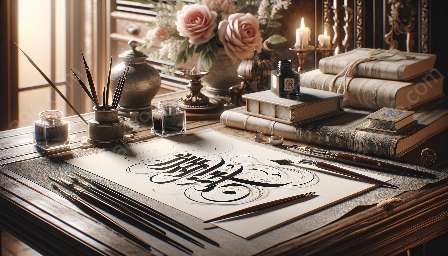Calligraphy is an art form that has been practiced across various cultures for centuries, each with its own unique styles and traditions. From the elegant Chinese brush calligraphy to the sophisticated Arabic script, calligraphy offers a broad spectrum of artistic expression.
By delving into the rich history and diverse practices of calligraphy across cultures, we can gain a deeper appreciation for the art form and its impact on society. In this comprehensive guide, we will explore the various calligraphy styles and traditions from different regions, highlighting their distinct characteristics and influences.
Chinese Calligraphy
Chinese calligraphy, also known as Shufa, is one of the oldest and most revered calligraphic traditions in the world. It encompasses several script styles, including seal script, clerical script, regular script, running script, and cursive script. Each style reflects the aesthetic values and cultural heritage of China, emphasizing harmony, elegance, and balance.
The mastery of Chinese calligraphy requires rigorous training and a deep understanding of brush strokes, ink, and paper. The art form often conveys deep philosophical or literary meanings, making it a spiritual and meditative practice.
Arabic Calligraphy
Arabic calligraphy, also known as Islamic calligraphy, is characterized by its intricate and ornamental designs. It plays a significant role in Islamic art and culture, with the script often used to decorate mosques, manuscripts, and other religious artifacts.
The intricate curves and flowing lines of Arabic calligraphy are deeply rooted in the cultural and religious traditions of the Islamic world. The script is not only a means of conveying written communication but also a form of artistic expression and devotion.
Japanese Calligraphy
Japanese calligraphy, or Shodo, embodies the simplicity and elegance of the Japanese aesthetic. Utilizing a brush and sumi ink, practitioners of Shodo aim to capture the essence of a subject with minimal strokes. The traditional styles of Japanese calligraphy include Kaisho (block style), Gyosho (semi-cursive style), and Sosho (cursive style).
Shodo reflects the Zen Buddhist philosophy of mindfulness and presence, emphasizing the harmonious connection between the mind, body, and brush. The art form is deeply intertwined with Japanese culture and is often practiced as a meditative and disciplined pursuit.
Western Calligraphy
Western calligraphy encompasses a wide range of styles and traditions, influenced by cultural, historical, and artistic movements. From the ornate illuminated manuscripts of the Middle Ages to the modern experimental approaches, Western calligraphy showcases diverse techniques and creative expressions.
The use of various writing tools, such as quills, nib pens, and brushes, has led to the development of distinct calligraphic styles across different European cultures. Modern practitioners continue to explore and innovate within the rich tapestry of Western calligraphy, blending tradition with contemporary influences.
Calligraphy for Kids
Introducing calligraphy to kids can be a fun and rewarding experience. By exploring different calligraphy styles and traditions from around the world, children can develop an appreciation for diverse artistic expressions and cultural heritage.
Engaging in calligraphy activities tailored for kids can help them enhance their fine motor skills, creativity, and understanding of different writing systems. Through playful and educational exercises, children can explore the beauty of calligraphy and its multicultural significance.
Calligraphy for Beginners
For beginners interested in calligraphy, the exploration of diverse calligraphic traditions can serve as a wellspring of inspiration and learning. Understanding the unique features and historical contexts of various calligraphy styles can inform and enrich one's own practice.
By embracing the multicultural aspects of calligraphy, beginners can expand their creative horizons and develop a deeper understanding of the art form. Learning from different cultural traditions can provide valuable insights and techniques that can be integrated into one's personal calligraphic journey.
Conclusion
As we embrace the diverse calligraphy styles and traditions across cultures, we are invited to celebrate the rich tapestry of human creativity and expression. Calligraphy, as a universal language of art, transcends borders and connects people through the beauty of the written word.
By fostering an inclusive and engaging approach to calligraphy, we can instill a sense of wonder, curiosity, and appreciation for the cultural heritage and artistic diversity that calligraphy embodies.

